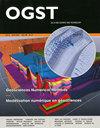利用甲烷干重整生产合成气并减少二氧化碳排放:利用低成本的镍基催化剂
IF 1.8
4区 工程技术
Q4 ENERGY & FUELS
Oil & Gas Science and Technology – Revue d’IFP Energies nouvelles
Pub Date : 2020-01-01
DOI:10.2516/ogst/2020016
引用次数: 8
摘要
研究了低成本镍基催化剂甲烷干重整(DRM)替代传统蒸汽转化炉(CSR)生产合成气同时降低二氧化碳排放的适用性。为了实现这一目标,设计了一种由双同心管组成的多管式热耦合反应器(热耦合三干式转化炉[TCTDR])。利用工业规模的CSR参数,模拟了两种提出的配置(带燃炉的DRM和甲烷三重整(TRM)代替燃炉(TCTDR))。采用数学非均质模型对反应器进行了模拟,并对各反应器的甲烷转化率、氢气产率和合成气摩尔流量进行了分析。结果表明,Ni - k / CeO2-Al2O3和Ni/La2O3催化剂的甲烷转化率分别为35.29%和31.44%,而CSR催化剂的甲烷转化率为26.5%。Ni/La2O3催化剂在TCTDR中的甲烷转化率达到16.98%,而Ni - mg / Ce-ZrO2 /Al2O3催化剂在TRM侧的甲烷转化率达到88.05%。在TCTDR的DRM侧使用Ni-K / CeO2-Al2O3催化剂的效率为15.88%,TRM侧使用NiO-Mg / Ce-ZrO2 /Al2O3催化剂的效率为88.36%。最后,研究了不同供能量对加热炉DRM性能的影响,在降低能耗方面取得了积极的效果。本文章由计算机程序翻译,如有差异,请以英文原文为准。
Syngas production plus reducing carbon dioxide emission using dry reforming of methane: utilizing low-cost Ni-based catalysts
Applicability of using Dry Reforming of Methane (DRM) using low-cost Ni-based catalysts instead of Conventional Steam Reformers (CSR) to producing syngas simultaneously with reducing the emission of carbon dioxide was studied. In order to achieving this goal, a multi-tubular recuperative thermally coupled reactor which consists of two-concentric-tubes has been designed (Thermally Coupled Tri- and Dry Reformer [TCTDR]). By employing parameters of an industrial scale CSR, two proposed configuration (DRM with fired-furnace and Tri-Reforming of Methane (TRM) instead of fired-furnace (TCTDR)) was simulated. A mathematical heterogeneous model was used to simulate proposed reactors and analyses were carried out based on methane conversion, hydrogen yield and molar flow rate of syngas for each reactor. The results displayed methane conversion of DRM with fired-furnace was 35.29% and 31.44% for Ni–K/CeO2–Al2O3 and Ni/La2O3 catalysts, respectively, in comparison to 26.5% in CSR. Methane conversion in TCTDR reached to 16.98% by Ni/La2O3 catalyst and 88.05% by NiO–Mg/Ce–ZrO2/Al2O3 catalyst in TRM side. Also, it was 15.88% using Ni–K/CeO2–Al2O3 catalyst in the DRM side and 88.36% using NiO–Mg/Ce–ZrO2/Al2O3 catalyst in TRM side of TCTDR. Finally, the effect of different amounts of supplying energy on the performance of DRM with fired-furnace was studied, and positive results in reducing the energy consumption were observed.
求助全文
通过发布文献求助,成功后即可免费获取论文全文。
去求助
来源期刊
CiteScore
2.70
自引率
0.00%
发文量
0
审稿时长
2.7 months
期刊介绍:
OGST - Revue d''IFP Energies nouvelles is a journal concerning all disciplines and fields relevant to exploration, production, refining, petrochemicals, and the use and economics of petroleum, natural gas, and other sources of energy, in particular alternative energies with in view of the energy transition.
OGST - Revue d''IFP Energies nouvelles has an Editorial Committee made up of 15 leading European personalities from universities and from industry, and is indexed in the major international bibliographical databases.
The journal publishes review articles, in English or in French, and topical issues, giving an overview of the contributions of complementary disciplines in tackling contemporary problems. Each article includes a detailed abstract in English. However, a French translation of the summaries can be provided to readers on request. Summaries of all papers published in the revue from 1974 can be consulted on this site. Over 1 000 papers that have been published since 1997 are freely available in full text form (as pdf files). Currently, over 10 000 downloads are recorded per month.
Researchers in the above fields are invited to submit an article. Rigorous selection of the articles is ensured by a review process that involves IFPEN and external experts as well as the members of the editorial committee. It is preferable to submit the articles in English, either as independent papers or in association with one of the upcoming topical issues.

 求助内容:
求助内容: 应助结果提醒方式:
应助结果提醒方式:


